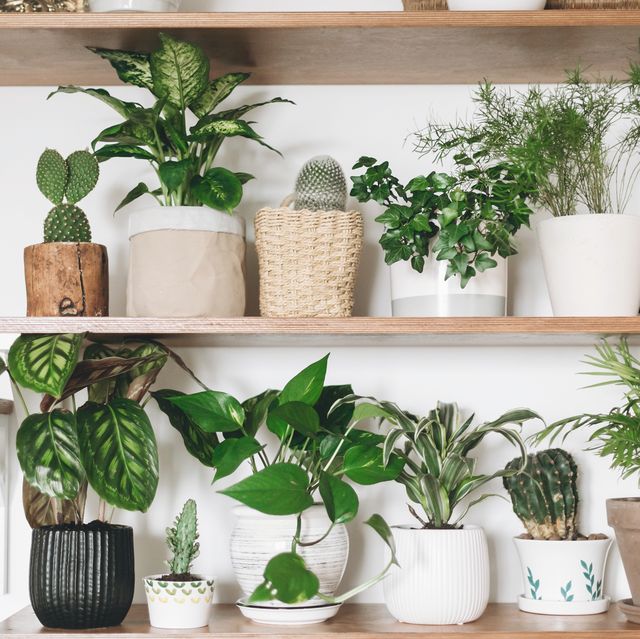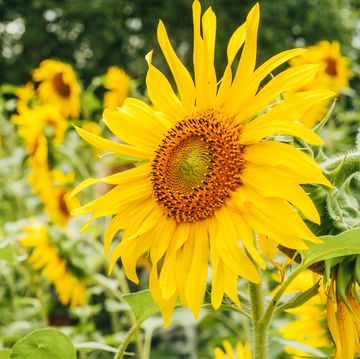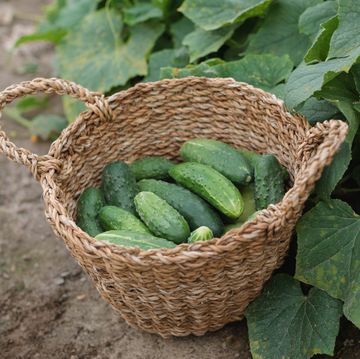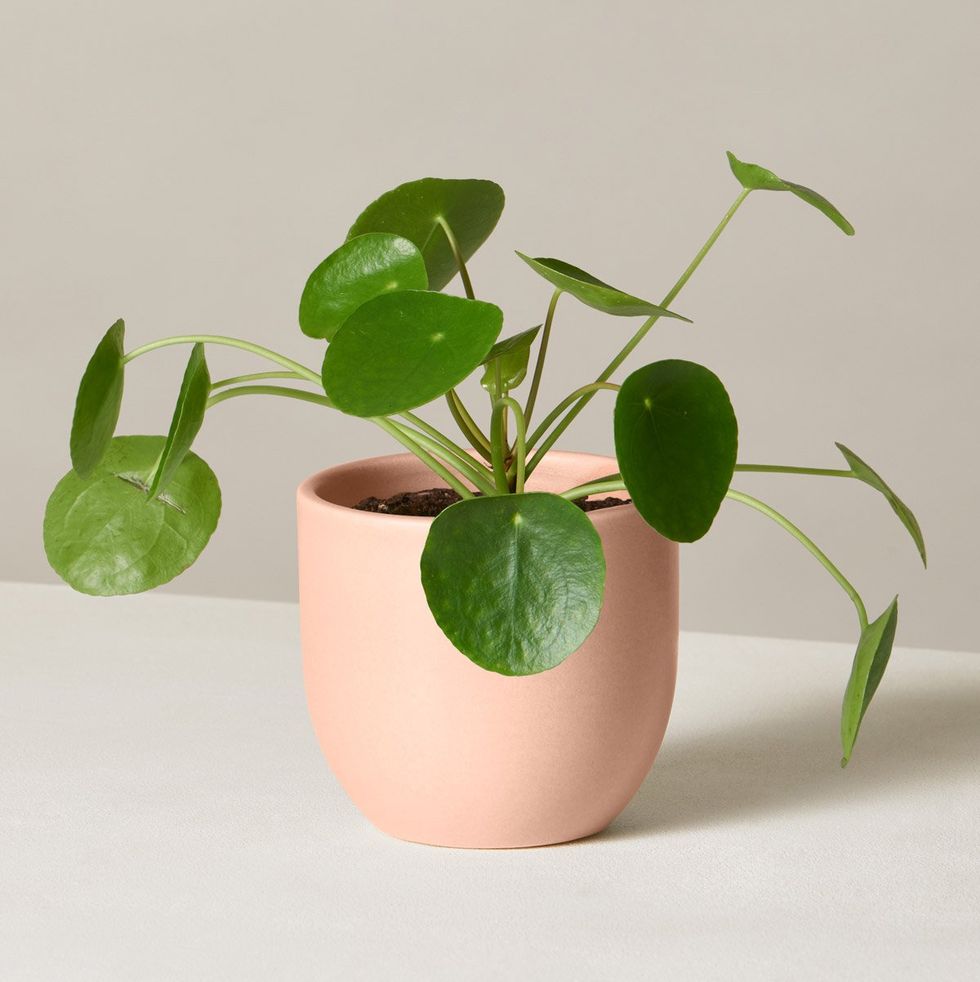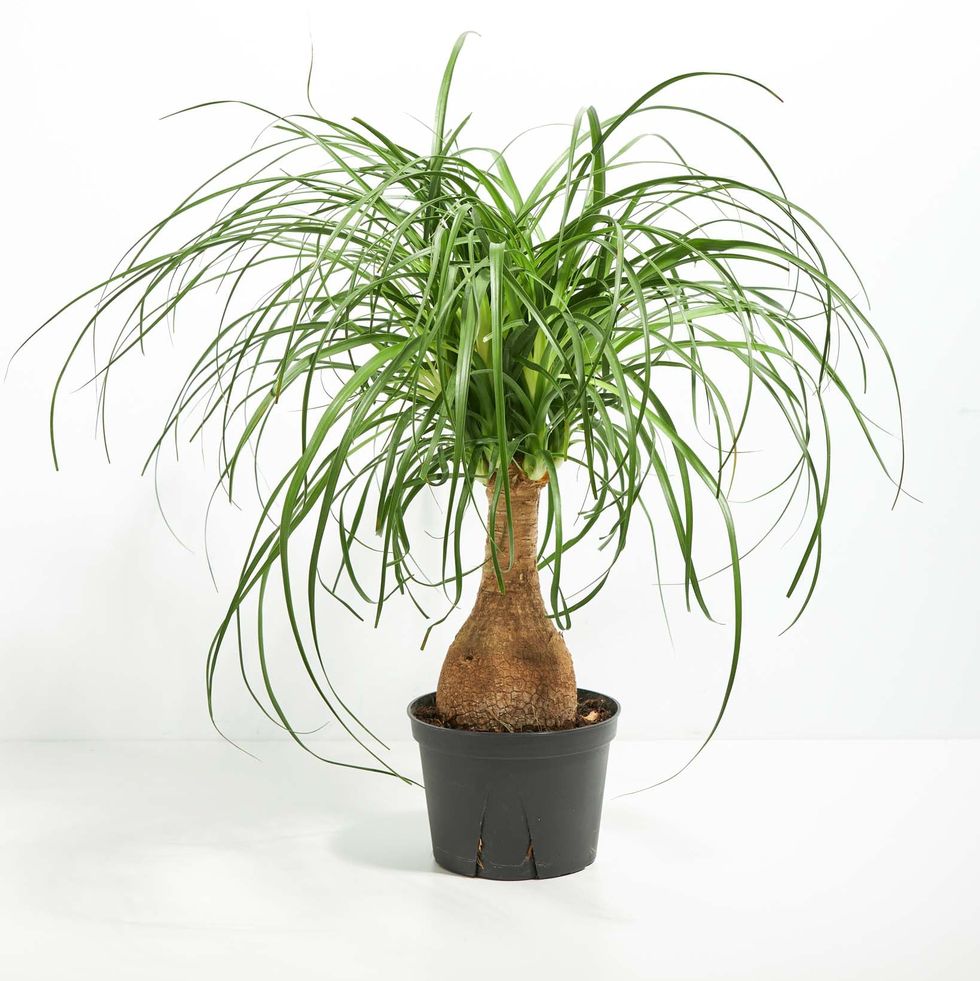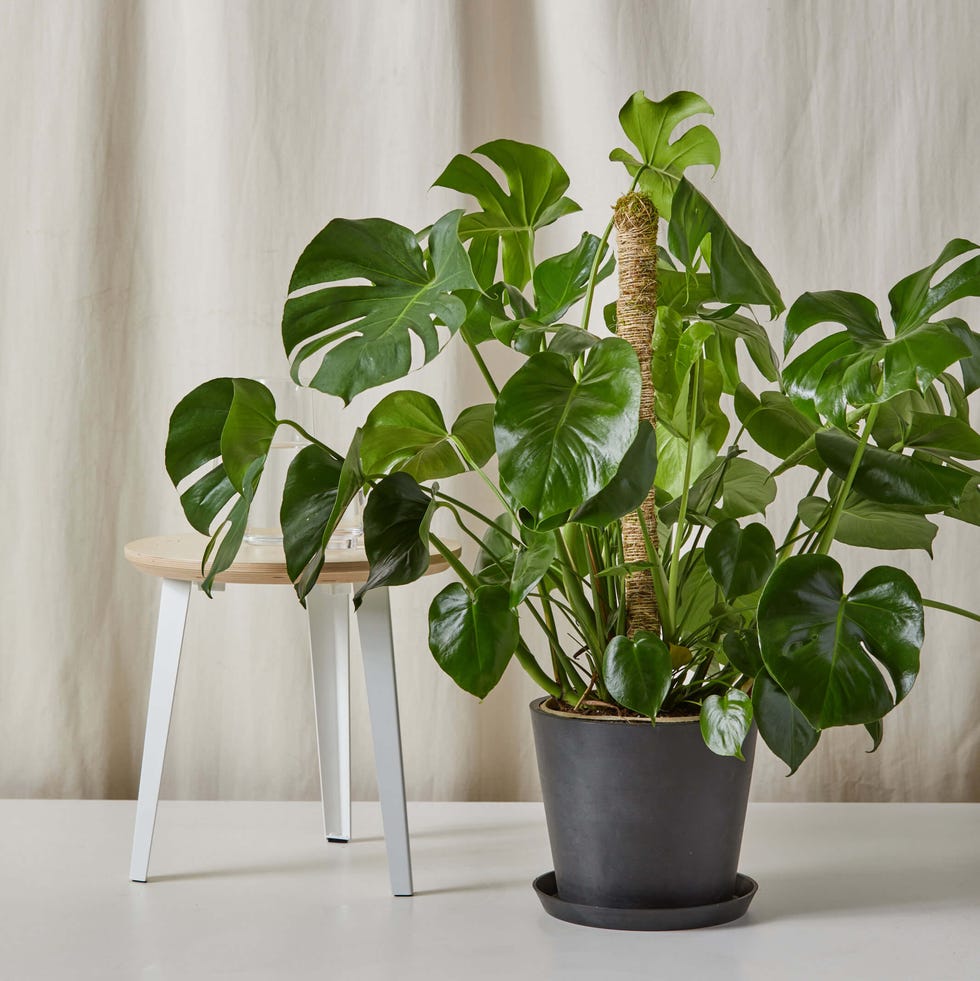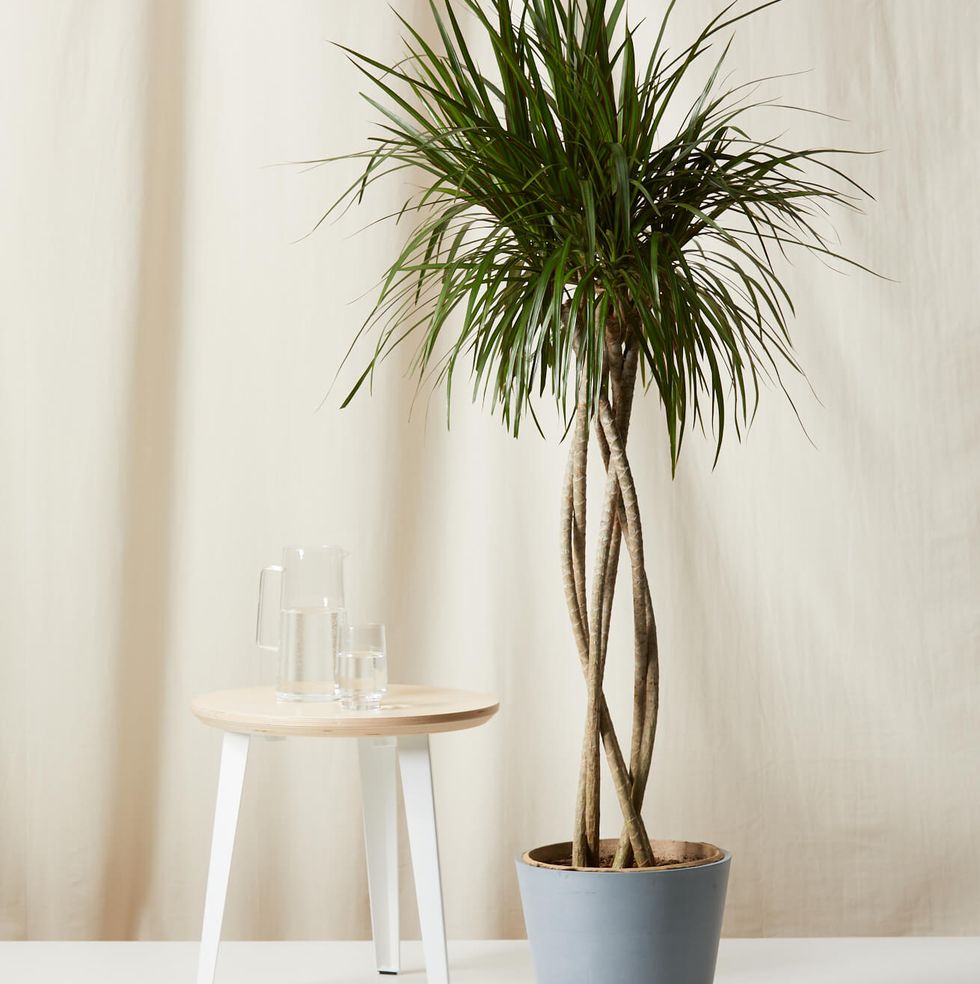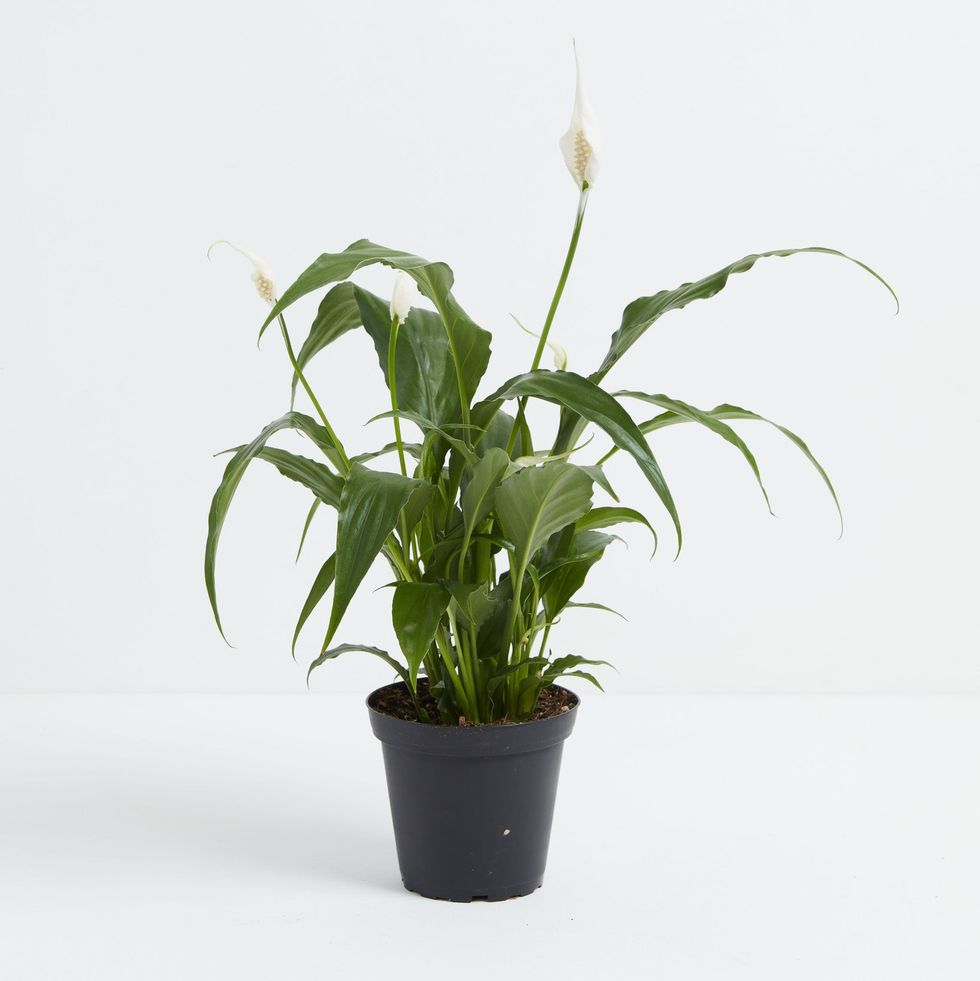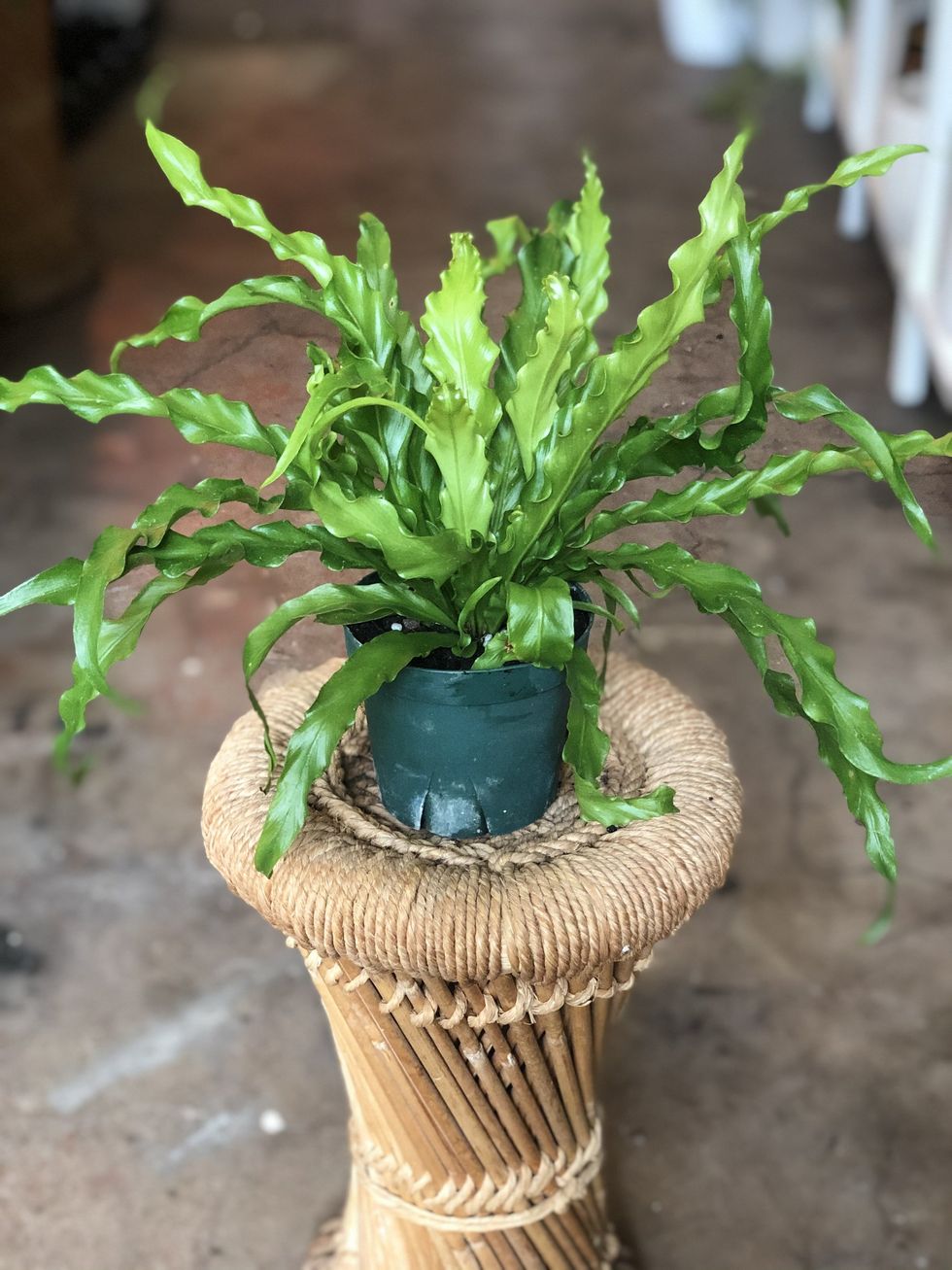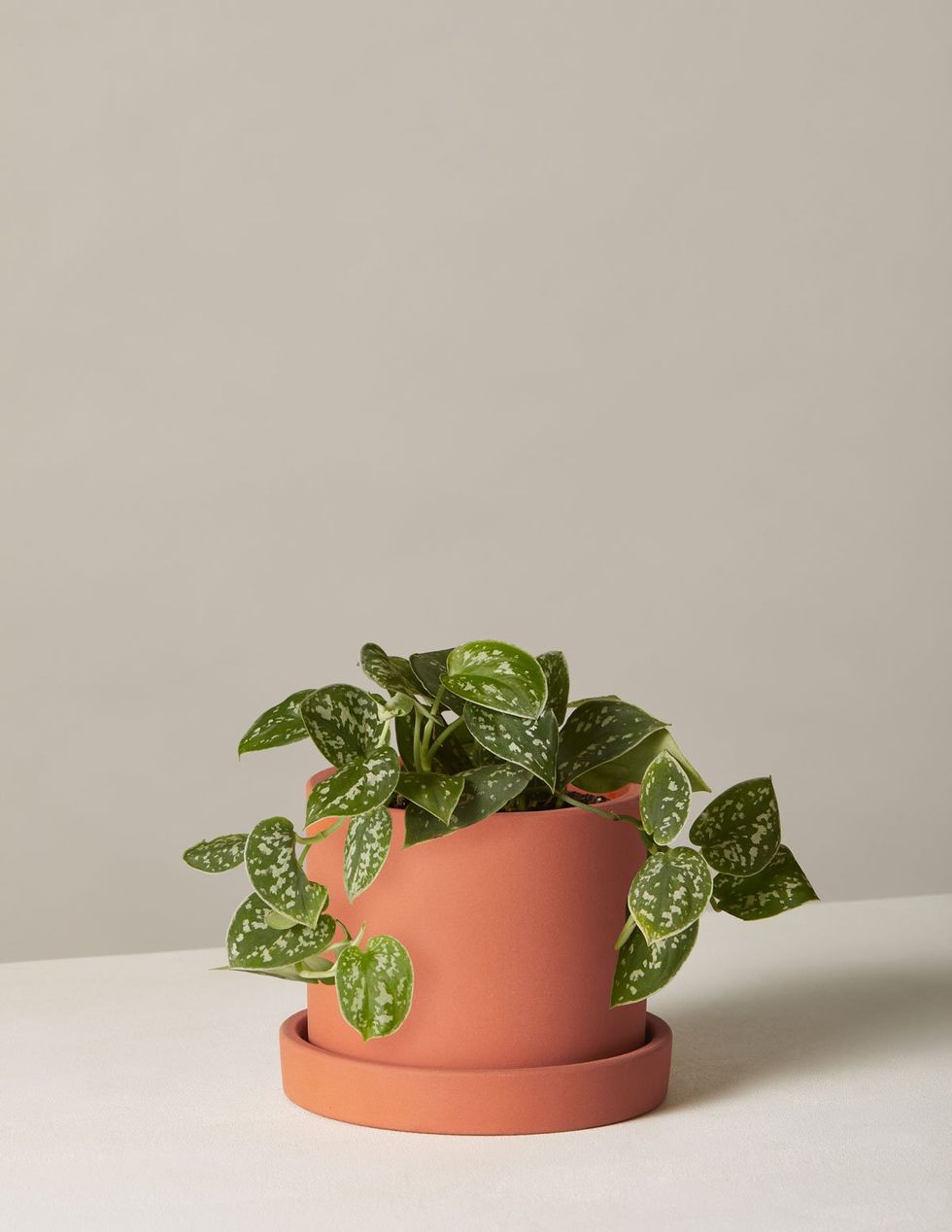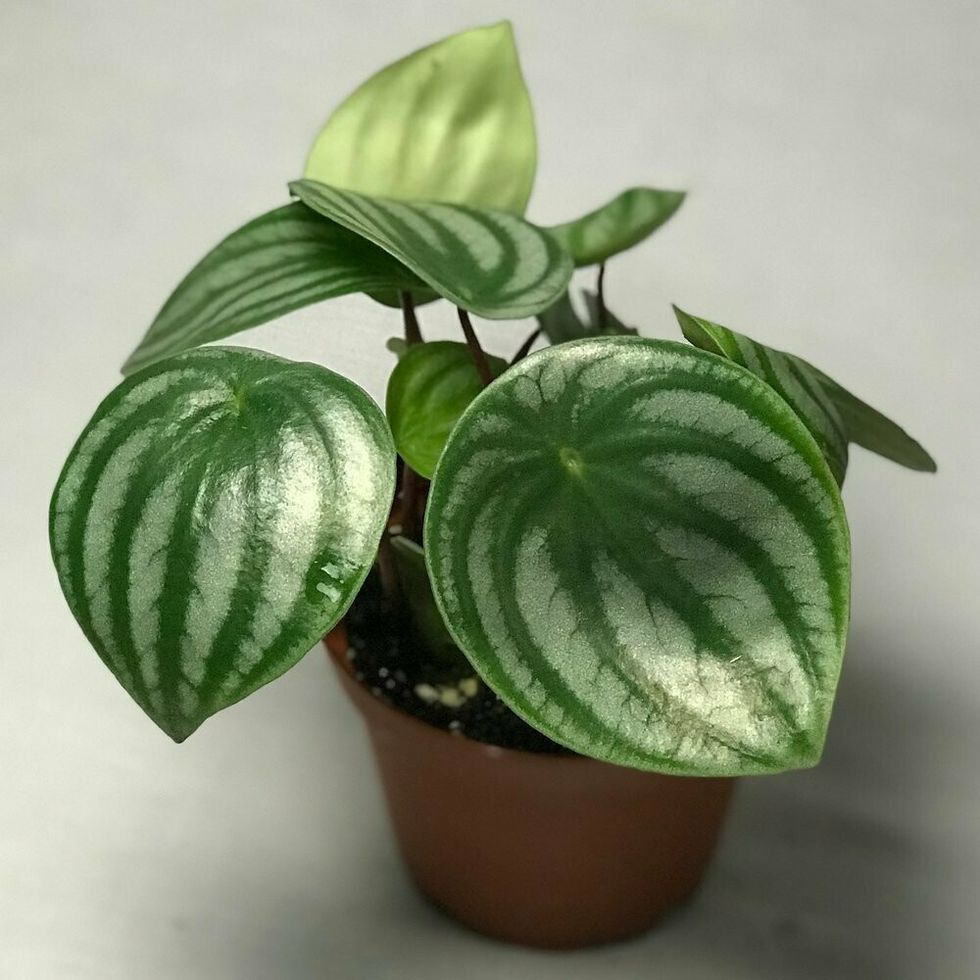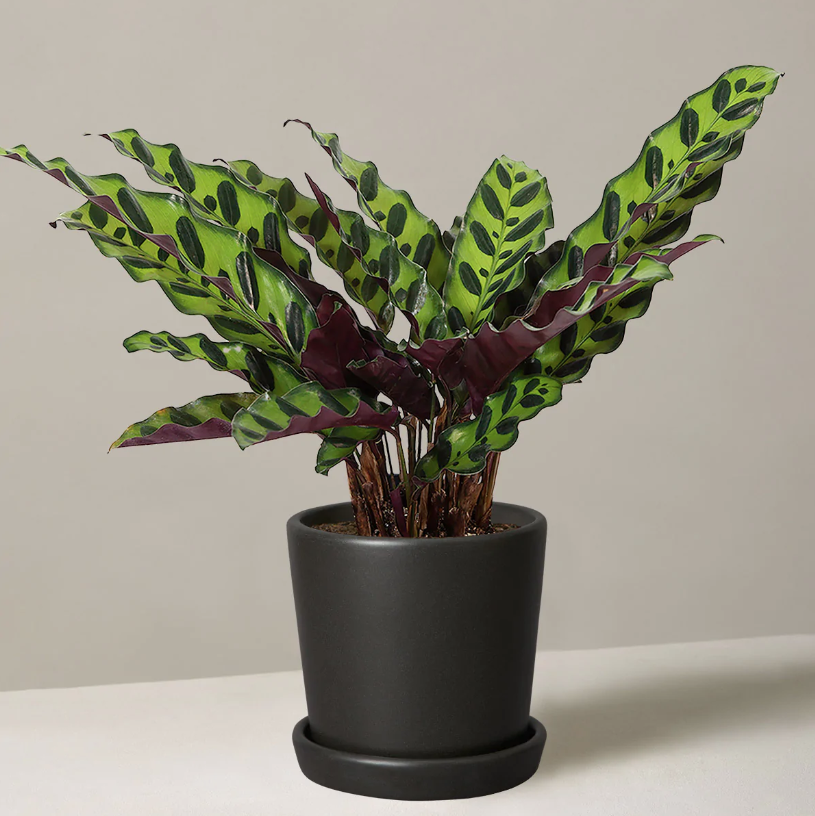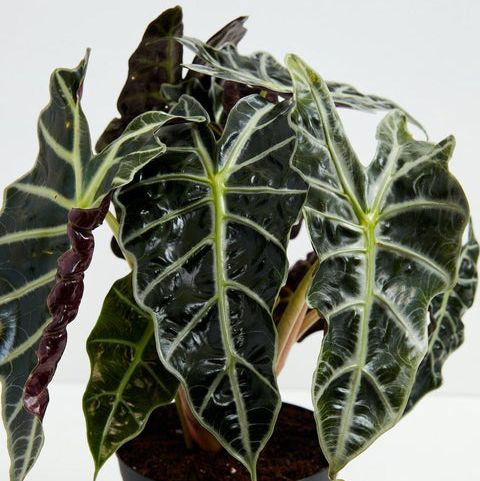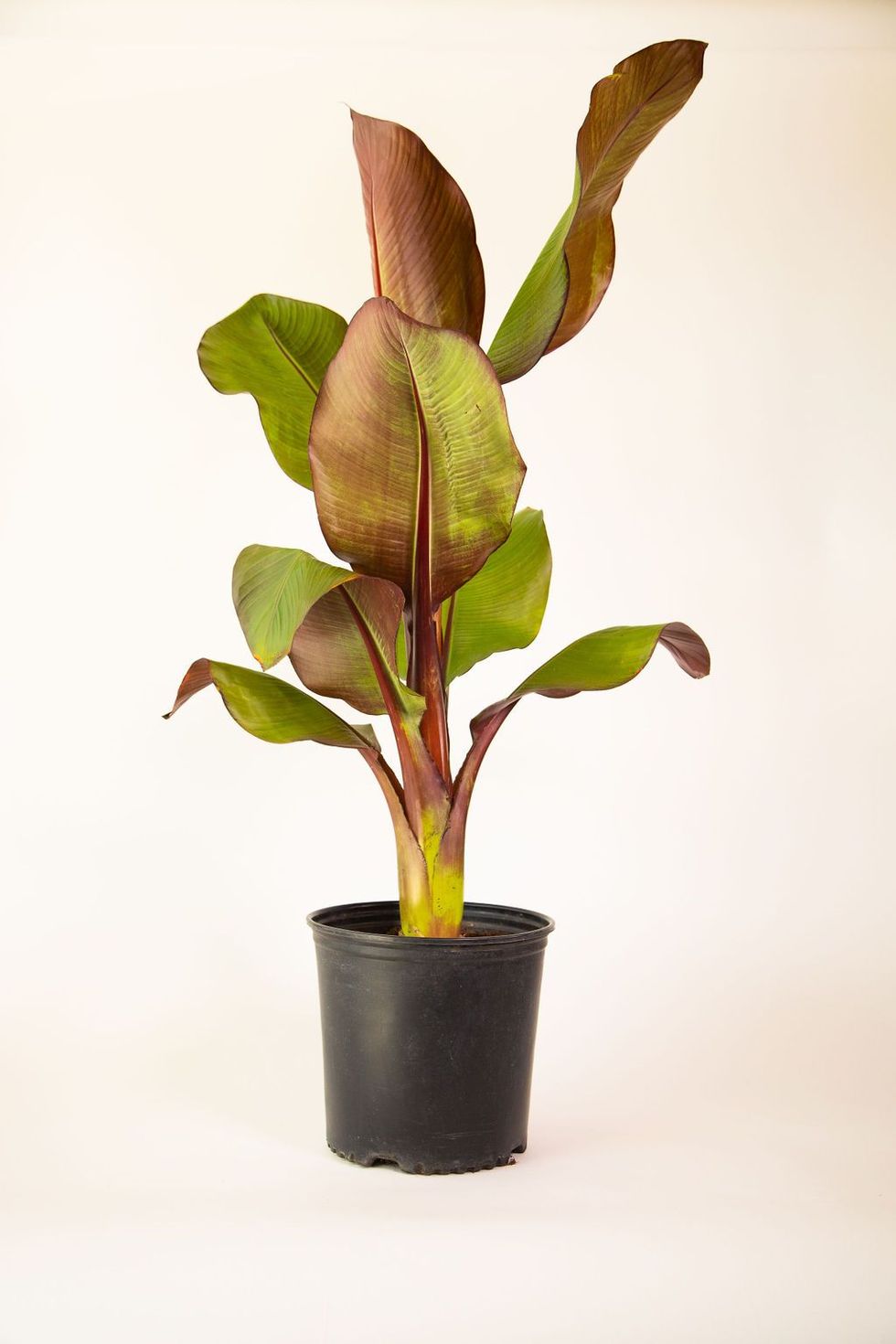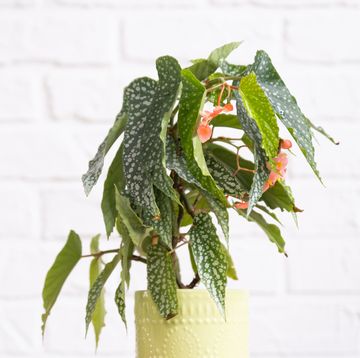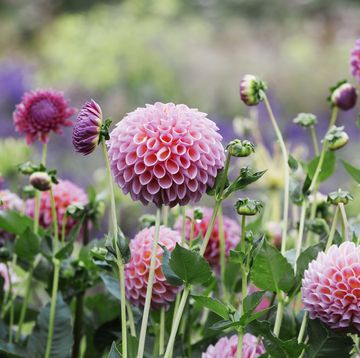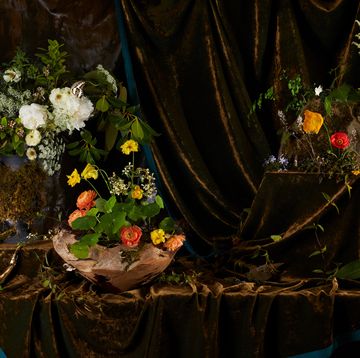Care Level: Easy
The Sill Pilea Peperomioides
Care Level: Easy
The Sill Pilea Peperomioides
This delightful, coin-shaped beauty is most commonly known as the Chinese money plant. The Asiatic perennial herb is native to the Yunnan Province of China and has been used as an ornamental plant for centuries. Pileas are notorious self-propagators, meaning you'll likely find a little green friend popping up from the soil. Try finding a place in your home that gets a consistent amount of indirect light to nurture one of your own.
Care Level: Easy
Lively Root Ponytail Palm
Care Level: Easy
Lively Root Ponytail Palm
Now 20% Off
Earning its name for its bouncy blades, the ponytail palm falls within the succulent family, preferring semi-dry conditions with bright light. This hardy, low-maintenance plant is perfect for pet owners or new parents, as it is nontoxic to humans and pets. Pro tip: Don't water your ponytail palm until the soil is completely dry. Because it is susceptible to root rot, aim to only water your plant once every two weeks during the warmer months and even less frequently in the winter.
Care Level: Easy
Bloomscape Monstera
Care Level: Easy
Bloomscape Monstera
Now 25% Off
Move over, fiddle leaf figs! The wildly beautiful Monstera has taken your spot as Instagram’s favorite houseplant. Known for their dramatic, Swiss cheese-like leaves, monstera deliciosa is an evergreen, tropical plant native to Central America. These lively beauts can tolerate low light but tend to grow faster with fuller leaves in a bright spot. Wait to water your monstera until the soil is about 70 percent dry, and only water it until the liquid flows through the pot’s drain hole.
Advertisement - Continue Reading Below
Care Level: Easy
Grounded Golden Pothos
Care Level: Easy
Grounded Golden Pothos
Native to Southeast Asia, the golden pothos is known for its heart-shaped green leaves with delicate yellow veining. These plants are fitting for the indoors because of their low-maintenance lifestyle and quick growth. When placed in bright, indirect light its veins can reach up to 10 feet if not trimmed! It's recommended to only water these plants every one to two weeks; if you find that the leaves are turning completely yellow, you are overwatering your plant.
Care Level: Easy
Bloomscape Dracaena Marginata Open Weave
Care Level: Easy
Bloomscape Dracaena Marginata Open Weave
The dracaena marginata, or dragon tree, is often used by designers as a way to add interest to a narrow corner with its spiky leaves and curvy stems. This low-maintenance stunner adapts to most environments but prefers medium, indirect sunlight. If you notice the leaves start to turn a pale color or are growing slowly, try moving your dragon tree into a more well-lit area of the home. It's extremely easy to overwater this plant, so make sure to wait until the top half of the soil is dry before watering again.
Care Level: Easy
Terrain ZZ Plant
Care Level: Easy
Terrain ZZ Plant
For those who tend to be a bit forgetful or are houseplant novices, the ZZ plant requires less water than most and doesn't need too much bright light. Its smooth and shiny leaves help indicate whether it needs more or less water. If you notice the individual leaflets are starting to wrinkle, try giving your plant a drink of water. It's important to keep this leafy friend out of reach of pets because it is poisonous if ingested.
Advertisement - Continue Reading Below
Care Level: Easy
Peace Lily
Care Level: Easy
Peace Lily
Now 25% Off
The peace lily makes a sophisticated addition to those tricky low-light rooms. These shade-loving plants are known for their fragrant spathes (the white flower-like spike). Peace lilies are more susceptible to mealybugs and scale, so it's smart to keep an insecticidal soap on hand to wipe down the plant. It also tends to droop when a bit thirsty, letting you know it's time for watering.
Care Level: Easy
plants Snake Plant
Care Level: Easy
plants Snake Plant
Now 30% Off
Native to Southern and Central Africa, snake plants are technically succulents that prefer medium to bright light and only need watering once every two weeks. It has swordlike leaves with vibrant yellow edges. Fun fact: Snake plants release oxygen throughout the night, unlike most plants, which release oxygen during the day.
Care Level: Easy
Botanica Birds Nest Fern
Care Level: Easy
Botanica Birds Nest Fern
The bird's nest fern gets its name from rippled leaves and new fronds that resemble bird eggs. The fern's fronds can actually appear wavier when it receives more light. However, it's native to rainforests in Asia, Africa, and Australia and thrives in low-light areas. Do not water directly into the center of your fern, as the crown rots easily.
Advertisement - Continue Reading Below
Care Level: Easy
The Sill Silver Satin
Care Level: Easy
The Sill Silver Satin
Otherwise referred to as satin pothos, this gray trailing vine looks divine placed on a shelf surrounded by books or on the kitchen window sill. The silver satin has a reputation as one of the easiest houseplants to keep alive for its ability to adapt to any environment. For those learning to propagate, this fast-growing vine may be a great option.
Care Level: Intermediate
Tennesse Tropicals Watermelon Peperomia
Care Level: Intermediate
Tennesse Tropicals Watermelon Peperomia
Unlike other species within the peperomia family, this easy-going houseplant with watermelon-esque leaves should never be placed in direct sunlight. Too much light causes the colors and patterns of the leaves to fade. Because it is native to the cool understory of South American rainforests, watermelon peperomia tends to only need to be watered when its leaves droop. When looking for an eye-catching planter for your new friend, opt for a planter on the smaller side as peperomia prefers to be root bound.
Care Level: Intermediate
Lively Root Boston Fern
Care Level: Intermediate
Lively Root Boston Fern
Now 20% Off
Boston ferns bring woodland whimsy to the indoors with their fluffy fronds. Native to tropical climates, these tricky ferns need plenty of filtered light and high humidity, or their lush leaves will shed. Place in a bright bathroom or kitchen where temperatures tend to be a bit higher in your home. You will also want to mist regularly and allow the soil to dry out between each watering.
Advertisement - Continue Reading Below
Care Level: Intermediate
The Sill Calathea Rattlesnake
Care Level: Intermediate
The Sill Calathea Rattlesnake
Plants falling into the Calathea family are often known for their eccentric leaves that fold up during nighttime. Rattlesnake plants often scorch or fade in bright light, so it's best to keep your tropical plant in an area with filtered light. Be prepared for your watering schedule for your plant to change depending on the season. During the spring and summer, you may need to water your plant more often to ensure the soil is constantly damp. As a tropical indoor plant, you also need to make sure to mist your rattlesnake plant on a regular basis to help emulate a high-humidity climate.
Care Level: Intermediate
Lively Root Alocasia Polly
Care Level: Intermediate
Lively Root Alocasia Polly
Growing up to 8 feet tall, alocasia plants make a gutsy statement with their arrow-head-shaped leaves and thick, white veins. Alocasias are not the plant for the forgetful gardener and require a regular watering schedule to keep the soil moist. You may also want to consider giving your bold plant frequent, warm showers in the sink to ensure it's getting enough moisture. Don't be alarmed if your plant starts to droop or yellow in the winter months. Alocasias will go through a dormant period, but you should continue to water them until they pop back up in the spring.
Care Level: Expert
Williams Sonoma Dwarf Lime Citrus Tree
Care Level: Expert
Williams Sonoma Dwarf Lime Citrus Tree
Consider yourself an experienced houseplant owner? A citrus tree will be the rewarding challenge you've been looking for. We recommend going with a dwarf lime tree that self-pollinates and yields the quickest crop. Since most citrus trees require 8 to 12 hours of sunlight a day, place your tree in the sunniest part of your home. Also, get in the habit of spritzing it regularly, as citrus trees prefer lots of moisture in the air.
Advertisement - Continue Reading Below
Care Level: Expert
Lively Root Red Banana Tree
Care Level: Expert
Lively Root Red Banana Tree
The crimson-tinted leaves of the ensete, also known as the red banana tree, put on a brilliant show both indoors and out. However, these tropical fruiting plants need plenty of extra care to thrive especially during the winter. Start by placing your plant in the sunniest part of your home—we are talking about a place that gets at least 12 hours of sunlight a day. Soil should be constantly moist, but never overly soggy as the extensive root system can rot easily. You should also be ready to repot the large plant if the roots begin growing through the drainage holes.

Sarah DiMarco (she/her) is the associate editor at VERANDA, covering all things design, architecture, art, gardens, jewelry, travel, wine and spirits. She also manages social media for the brand.
Advertisement - Continue Reading Below
Advertisement - Continue Reading Below
Advertisement - Continue Reading Below
